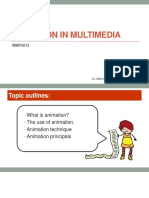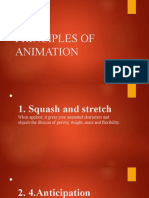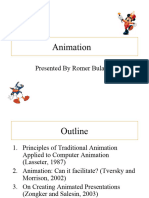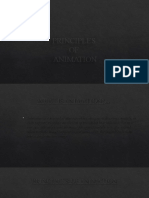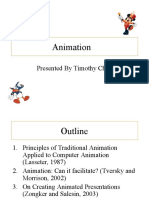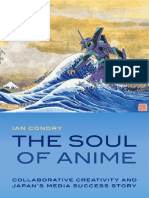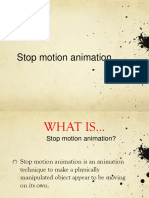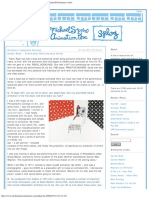0% found this document useful (0 votes)
26 views14 pagesIntroduction To Animation
The document provides a comprehensive overview of animation, defining key terms such as computer graphics, animation, and frames, and outlining various application areas including advertising, gaming, education, and entertainment. It also details the basic principles of animation, the top five types of animation styles, and the differences between linear, 2D, and 3D animation. Additionally, it emphasizes the importance of techniques like squash and stretch, anticipation, and timing in creating realistic animations.
Uploaded by
mckenzieantony3Copyright
© © All Rights Reserved
We take content rights seriously. If you suspect this is your content, claim it here.
Available Formats
Download as PDF, TXT or read online on Scribd
0% found this document useful (0 votes)
26 views14 pagesIntroduction To Animation
The document provides a comprehensive overview of animation, defining key terms such as computer graphics, animation, and frames, and outlining various application areas including advertising, gaming, education, and entertainment. It also details the basic principles of animation, the top five types of animation styles, and the differences between linear, 2D, and 3D animation. Additionally, it emphasizes the importance of techniques like squash and stretch, anticipation, and timing in creating realistic animations.
Uploaded by
mckenzieantony3Copyright
© © All Rights Reserved
We take content rights seriously. If you suspect this is your content, claim it here.
Available Formats
Download as PDF, TXT or read online on Scribd
/ 14










